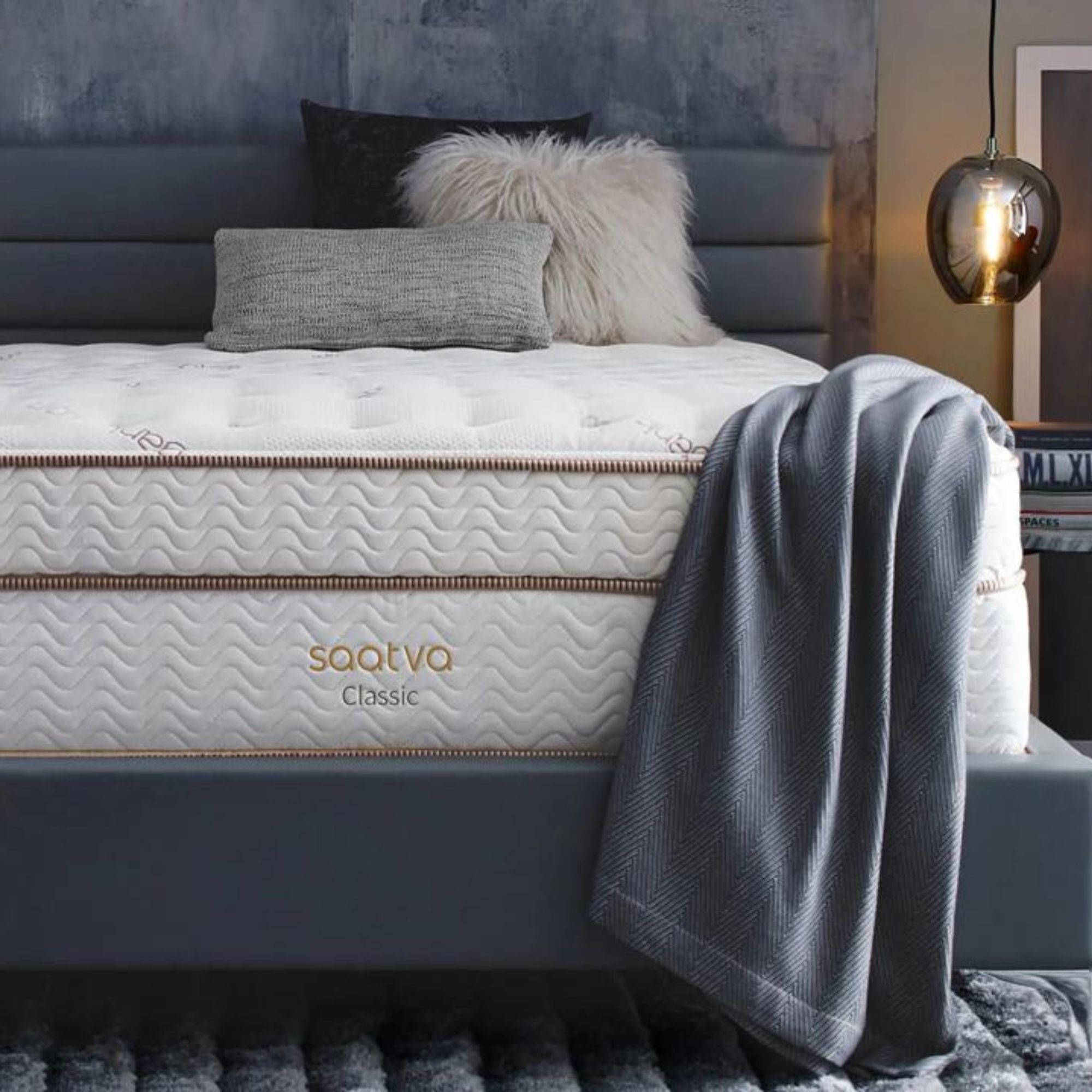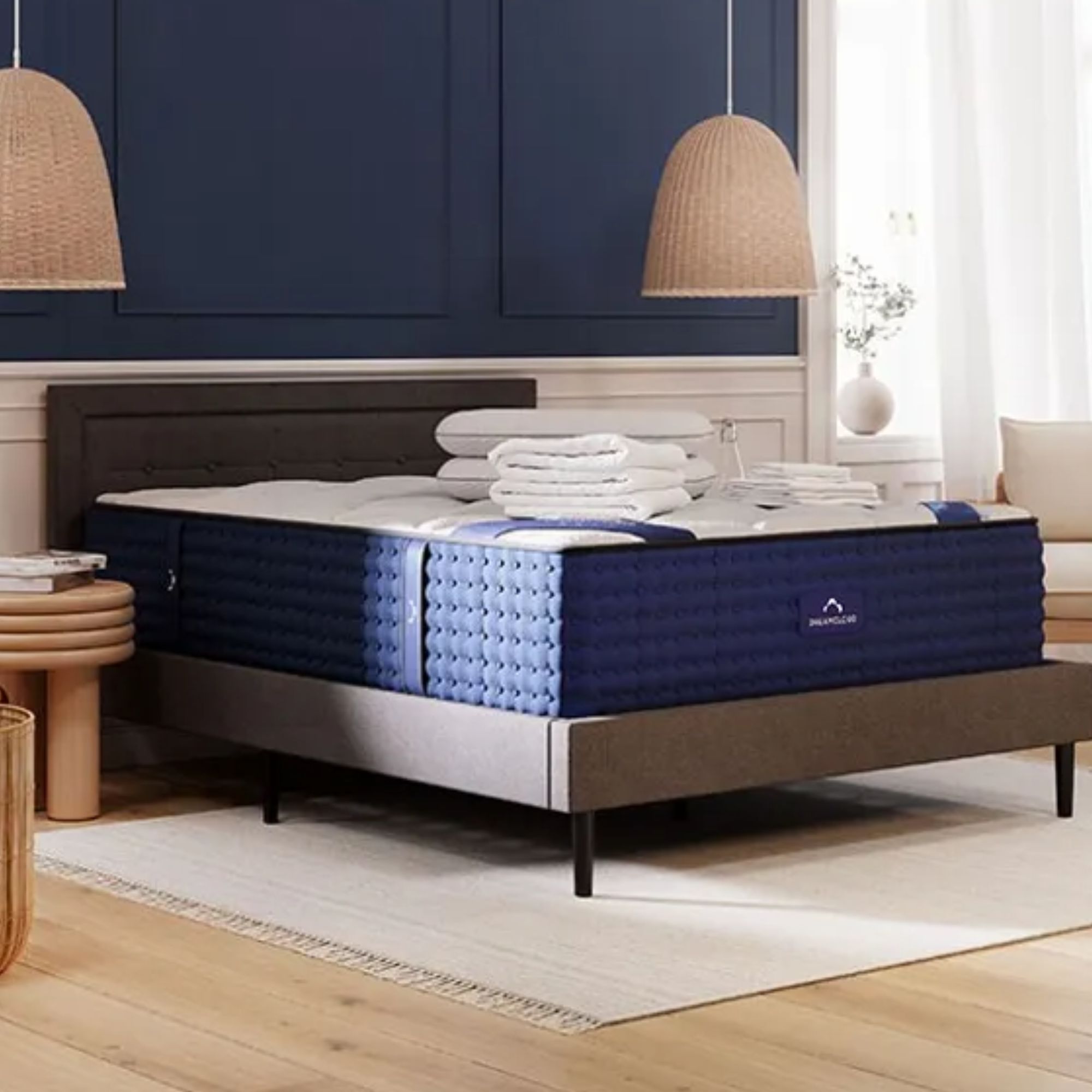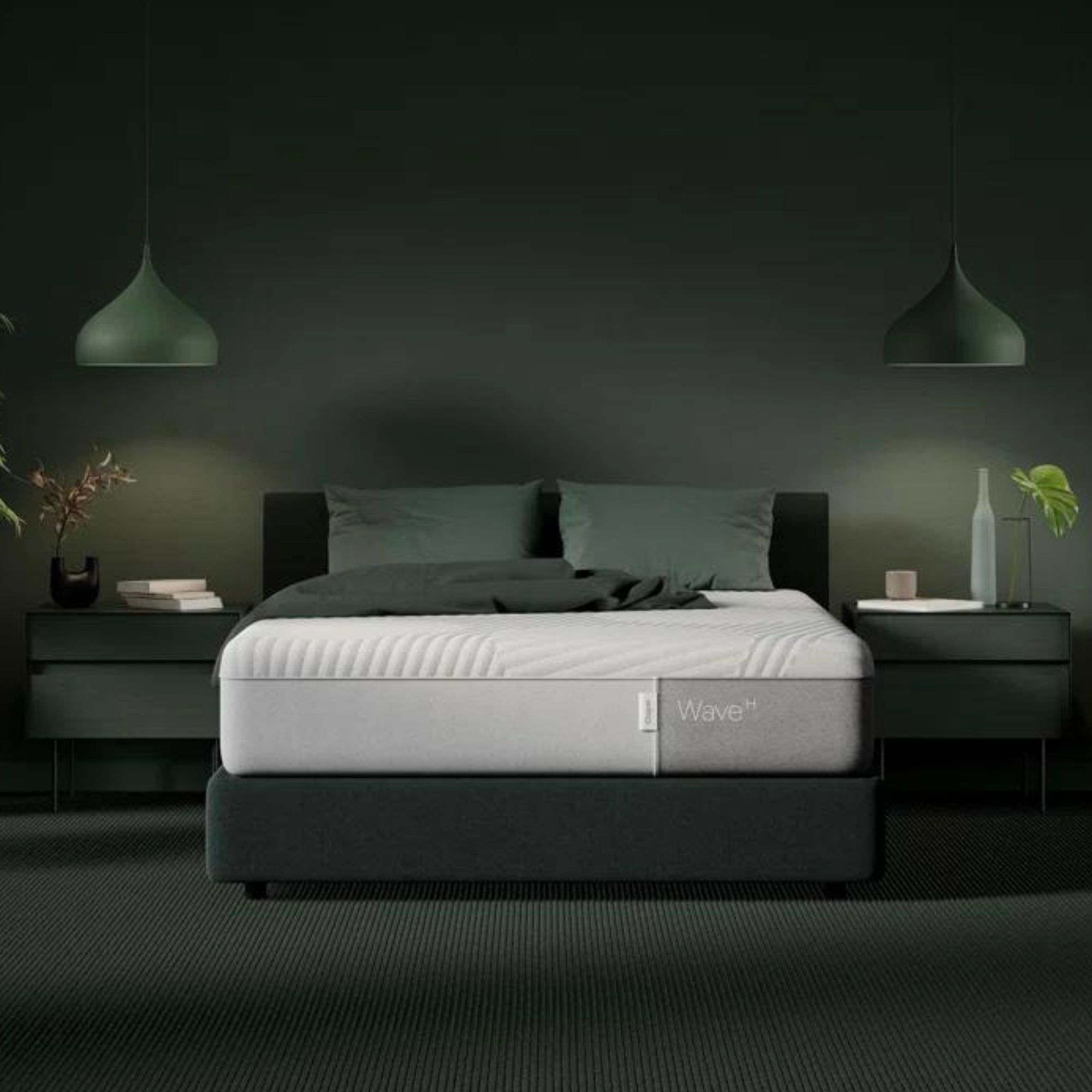Is it good to sleep on the floor? Mattress expert confirms what's best for your back
If you like to sleep on the floor it's important to understand the benefits and drawbacks first. Here's what the experts have to say.


For those who like a firm sleep surface, sleeping on the floor seems ideal. Lots of people have already made a cold, flat floor part of their night-time routine. In fact, in some cultures, it's more common to sleep on the floor than on a thick mattress. If you're new to the sleeping-on-the-floor phenomenon, it's crucial to know what's best for your back.
There is anecdotal evidence that sleeping on the floor can help with back pain, spinal alignment, and temperature regulation, but there is little scientific research, and resting on such a solid surface could have the opposite effect. Depending on what you're used to, sleeping directly on the floor can be a big adjustment, and your back could pay the price.
To get further insight into whether it's good to sleep on the floor – or not – I've spoken to a mattress expert. So before you decide to get rid of your mattress and set up your bed on the floor, understand the benefits and drawbacks, and what is recommended instead.
Is it good to sleep on the floor?

The expert's verdict
If you're used to sleeping on a mattress, especially a soft one, then the change in the surface firmness will be noticeable. Theresa Schnorbach, content director and sleep scientist at Emma Mattress, says not to sleep on the floor. 'A hard or potentially uneven surface will not provide the support your body needs when you sleep. The spine requires a certain level of support to maintain its natural alignment, and sleeping on a hard surface can put undue pressure on the spine, leading to discomfort and pain.'
Sleeping directly on the ground, may not be beneficial for your back, but sleeping lower to the ground does have other advantages:
- Temperature regulation: If you tend to overnight at night, sleeping lower on the floor means you sleep cooler since heat rises.
- Blood circulation: Body weight is more evenly distributed on a flat sleep surface which allows for your organs and muscles to function effectively.
- Save on money and space: Studio dwellers, small home owners and those without a big budget may appreciate the extra space and cash that comes with not having a bed frame.

Theresa Schnorbach is a psychologist and sleep scientist specializing in Clinical Psychology and Cognitive Neuropsychology. She has completed post-graduate training in Cognitive Behavioural Therapy for Insomnia (CBT-I) with the German Sleep Society (Deutsche Gesellschaft für Schlafforschung und Schlafmedizin (DGSM)), endorsed by the European Research Society.
What to sleep on instead
1. A firm mattress
If you think a hard, flat surface would be better for you, it's best to look at investing in one of the best firm mattresses instead. Whether you put this directly on the floor or on a low bed frame, a firm mattress type will allow for comfortable sleep without the risk of back pain.
2. A hybrid mattress
Schnorbach recommends getting a 'hybrid mattress that combines coil springs of a traditional mattress with memory foam for the best of both worlds'. This will remove the sink-in feeling you don't want while bringing the right amount of cushion and support for your spine and joints. 'This combination makes hybrids a great choice for light sleepers as well as those who sleep on their stomachs or backs.' adds Schnorbach.
Design expertise in your inbox – from inspiring decorating ideas and beautiful celebrity homes to practical gardening advice and shopping round-ups.
3. A cooling mattress
If the cooling aspect of sleeping on the floor is what you find most appealing, it's worth checking out cooling mattresses with specific temperature-regulating features 'that can improve sleep quality' says Schnorbach. Lots of mattresses now have a gel or charcoal layer that helps to absorb and dissipate heat as you need it, keeping you cool through the night.

The Saatva classic mattress is our number one mattress. With three firmness levels to choose from, opting for the firm will mimic sleeping on the floor without damage to your back. It's also a hybrid that offers both the comfort and support your back deserves.
More details in our Saatva Classic mattress review

We understand hybrid mattresses can get expensive, and sleeping on the floor sounds like the more affordable option. The Dreamcloud hybrid mattress is one of the best value hybrid mattresses you can get. Investing in comfier sleep means your health won't have to pay.
More details in our Dreamcloud luxury hybrid mattress review

The Casper Wave hybrid mattress features cooling technology that claims to keep you cool for at least 12 hours. Using gel pods to cushion your joints and three foam layers to keep your spine aligned, this one is great for hot sleepers who often suffer from back pain.
More details in our Casper Wave hyrbid mattress review.
FAQs
Is it OK to sleep on the floor everyday?
If you're accustomed to sleeping on the floor, it may not be an issue. But for someone used to sleeping in bed or on a mattress, a night or two on the floor may be okay, but it is not recommended to forgo your bed and swap to the floor instead. Sleeping on the floor can contribute to back, neck, and joint pain, and if you already suffer from mobility issues, getting down to the ground and up again can cause strain. If you suffer from allergies, regularly sleeping on the floor may also set off asthma attacks due to dust and dirt build-up being close to your mouth and nose.
How far off the floor should you sleep?
The ideal sleeping height depends on your height. The average bed is around 25 inches high, but you can measure whether it's the right height for you by sitting on the bed and paying attention to where your feet fall. Though it's ultimately a personal preference, if your feet don't reach the floor it could be too high, and if your knees don't sit at a 90-degree angle, it could be too low.
Having a small bedroom may mean you don't have room for a bed frame. But that shouldn't mean your back has to suffer. There are plenty of small bedroom ideas to try to stretch your space – because getting a great night's sleep should always be a first priority.

Louise is your eCommerce Editor and sleep specialist to help you wind down well. A connoisseur of the mattress world, Louise previously covered sleep and wellness (as well as the occasional organizational buy) at Real Homes, and has tried, tested, and reviewed some of the buys for your bedroom. With an MA in International Journalism and PR experience, Louise brings bags of bedding expertise and enjoys nothing more than helping readers find solutions and products that best suit their sleep needs.